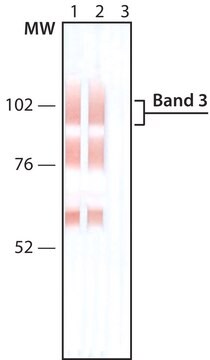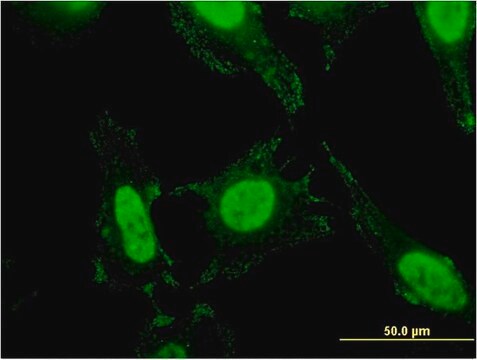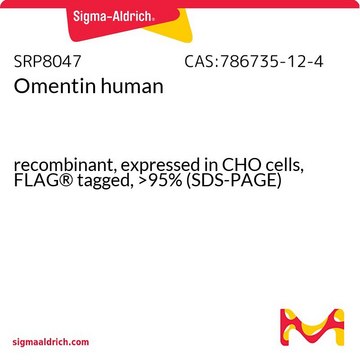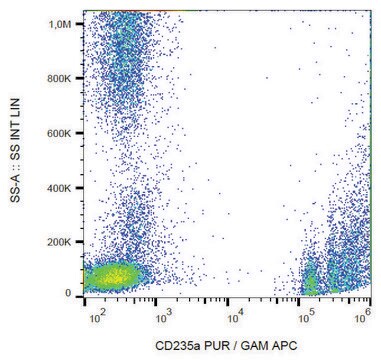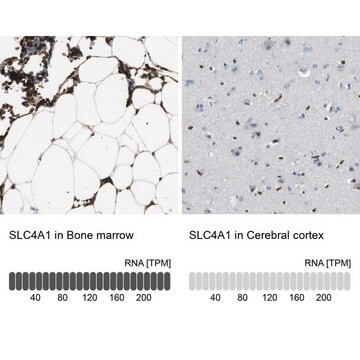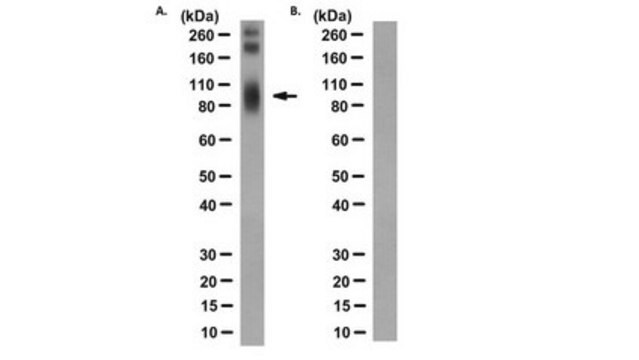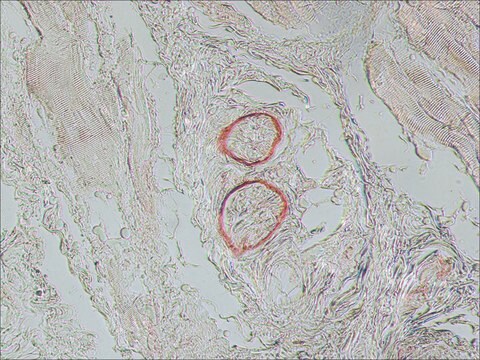G7900
Monoclonal Anti-Glycophorin A (α) antibody produced in mouse
ascites fluid, clone E4
About This Item
FACS
IF
WB
flow cytometry: suitable using bone marrow nucleated cells
indirect immunofluorescence: suitable using bone marrow nucleated cells
western blot: suitable using extracts of human red blood cell ghosts
Recommended Products
biological source
mouse
conjugate
unconjugated
antibody form
ascites fluid
antibody product type
primary antibodies
clone
E4, monoclonal
contains
15 mM sodium azide
species reactivity
human
technique(s)
agglutination assay: 1:800 using human erythrocytes
flow cytometry: suitable using bone marrow nucleated cells
indirect immunofluorescence: suitable using bone marrow nucleated cells
western blot: suitable using extracts of human red blood cell ghosts
isotype
IgM
UniProt accession no.
shipped in
dry ice
storage temp.
−20°C
target post-translational modification
unmodified
Gene Information
human ... GYPA(2993)
Specificity
Immunogen
Application
- agglutination assay at a working dilution of 1:800 using human erythrocytes
- flow cytometry using bone marrow nucleated cells
- indirect immunofluorescence using bone marrow nucleated cells
- western blot using extracts of human red blood cell ghosts
Biochem/physiol Actions
Disclaimer
Not finding the right product?
Try our Product Selector Tool.
Storage Class Code
10 - Combustible liquids
WGK
nwg
Flash Point(F)
Not applicable
Flash Point(C)
Not applicable
Choose from one of the most recent versions:
Already Own This Product?
Find documentation for the products that you have recently purchased in the Document Library.
Our team of scientists has experience in all areas of research including Life Science, Material Science, Chemical Synthesis, Chromatography, Analytical and many others.
Contact Technical Service